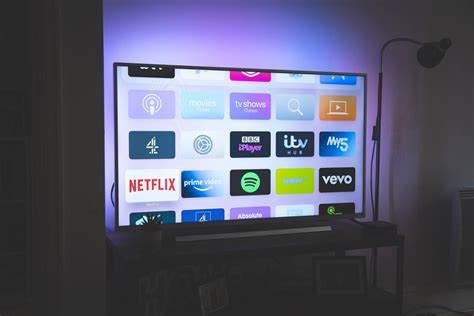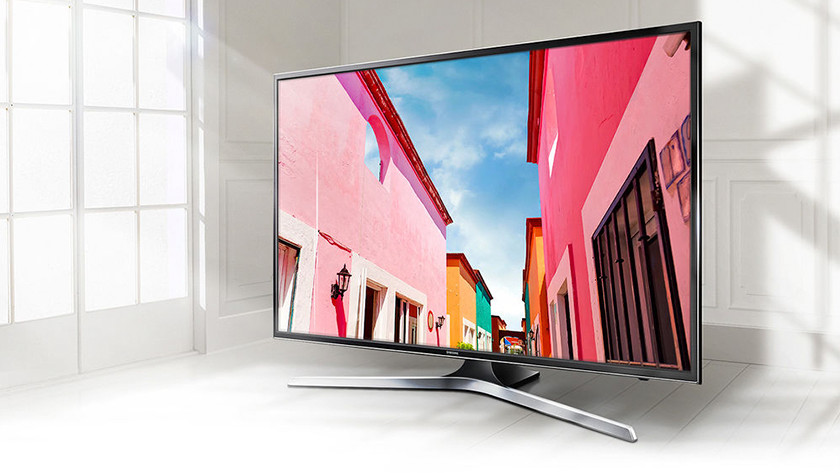Choosing a new TV can be both exciting and overwhelming. With so many brands, models, and technologies available, figuring out what works best for your home can feel like navigating a maze. Maybe you’re replacing an old unit, or perhaps you’re upgrading to get the latest features. Whatever your situation, making the right choice is important—you want something that not only looks great in your living room but also enhances your viewing experience.
In this article, we’ll help you break down the most important factors to consider when picking a TV. From screen size to smart features, we’ll cover everything you need to know to make an informed decision.
Common Question: “What Should I Look for When Buying a TV?”
The most common question people ask is, “What size should I get?” But that’s only one piece of the puzzle. There’s a lot more to consider, including picture quality, sound, and whether you need smart features. Let’s dive into the most important factors.
1. Pick the Right Screen Size

One of the first things you’ll need to decide is the size of the TV. Many people think bigger is always better, but that’s not always true. A massive TV in a small room can feel overwhelming, while a small TV in a large room might not provide the immersive experience you want.
How to Choose:
- Room Size Matters: Measure the distance between your seating area and where the TV will be placed. A general rule of thumb is that the ideal screen size is about half the distance from your couch. So, if you’re sitting 8 feet (96 inches) away, a 48-50 inch TV would be a comfortable choice.
- Viewing Angle: Make sure that the screen is large enough that you don’t have to strain your eyes to see it, but also not so large that you constantly have to move your head to follow the action.
Example: If you live in an apartment with a cozy living room, a 43-inch or 50-inch TV could be ideal. For a larger living room with plenty of space, a 65-inch or even 75-inch TV might be more appropriate.
2. Resolution: 4K or 8K?
Resolution refers to the number of pixels that make up the picture on the screen. More pixels mean more detail. Right now, most new TVs are either 4K or 8K, with 4K being the most common.
4K vs. 8K:
- 4K: This has four times the resolution of Full HD and offers excellent picture clarity and detail. It’s the standard for most TVs, and content in 4K is widely available through streaming services, Blu-ray, and even gaming consoles.
- 8K: While it offers even higher resolution, there’s very little 8K content available right now. It’s more of a future-proof investment, but unless you’re an early adopter or tech enthusiast, a 4K TV will suit most households just fine.
Tip: Look for HDR (High Dynamic Range) capability as well. HDR makes the picture more dynamic by improving the contrast and color range, making bright scenes look crisper and dark scenes more detailed.
3. Smart Features: What Do You Need?

Most new TVs come with smart features, but the options can vary widely. A “smart TV” simply means it has built-in Wi-Fi and can connect to the internet to stream content from apps like Netflix, Hulu, and YouTube. However, not all smart TVs are created equal.
Key Features to Look for:
- App Availability: Make sure the TV supports the apps you frequently use. Some lower-end models may not support as many apps, or their app stores may be more limited.
- Voice Control: Some TVs now come with voice assistants like Google Assistant, Alexa, or built-in voice search. This feature can be convenient for changing the channel, adjusting the volume, or searching for shows.
- User Interface: The operating system should be intuitive. Some TVs come with clunky menus, while others like LG’s WebOS or Samsung’s Tizen are more streamlined and easier to navigate.
Real-Life Example: If you love to binge-watch on Netflix and YouTube, make sure the TV has quick access to those apps. Also, if you’re already using a smart home system like Amazon Alexa or Google Assistant, consider a TV that integrates with those systems for easy voice control.
4. Sound Quality: Don’t Ignore the Audio
Many people overlook sound quality when shopping for a TV. Thin TVs often mean small, underpowered speakers, which can result in subpar audio. While the picture might be stunning, poor sound can ruin your experience.
What You Can Do:
- Look for Built-in Sound Features: Some TVs come with enhanced sound options like Dolby Atmos or DTS Virtual
. These technologies create a more immersive audio experience.
- Consider a Soundbar: If your TV doesn’t have great built-in speakers, consider purchasing a Soundbar. They are relatively inexpensive and can make a big difference in your viewing experience by offering richer, fuller sound.
Pro Tip: Try to listen to the TV’s sound in the store if possible, or read reviews that focus on sound quality. If you watch a lot of action movies or enjoy concert videos, sound quality is just as important as picture quality.
5. Refresh Rate: Smoother Motion Matters

The refresh rate refers to how many times the TV refreshes the image on the screen per second, measured in hertz (Hz). A higher refresh rate means smoother motion, which is especially noticeable when watching fast-paced sports or action scenes.
60Hz vs. 120Hz:
- 60Hz: Most TVs have a refresh rate of 60Hz, which is fine for regular viewing, but you might notice motion blur during fast-moving scenes.
- 120Hz: This provides a smoother viewing experience and is ideal for watching sports, gaming, or action movies.
Pro Tip: If you’re a gamer or sports enthusiast, a TV with a higher refresh rate will definitely enhance your experience.
6. Budget: Balance Between Features and Price
Your budget will naturally be a big factor in your decision. Fortunately, TVs have come down in price significantly over the years, and you can get a great 4K TV without breaking the bank.
Consider:
- Mid-Range Options: TVs from brands like Samsung, LG, and Sony offer great features at mid-range prices. You might not get all the bells and whistles, but you’ll still have a high-quality viewing experience.
- Premium Options: If you’re willing to invest in a premium model, you’ll enjoy features like OLED displays, advanced HDR, and superior design.
Real-Life Example: A 55-inch 4K TV from a reputable brand can cost anywhere from $400 to $1,200, depending on the features. If you’re on a tight budget, look for sales or opt for a model from the previous year—it’s still packed with great features without the new-release price tag.
Final Thoughts and Call to Action
Picking the perfect TV doesn’t have to be complicated. Focus on what matters most to you—whether it’s screen size, picture quality, or smart features—and choose a model that fits your space and budget. Remember, the best TV for you is the one that enhances your lifestyle and makes your viewing experience more enjoyable.
What TV features matter the most to you? Have you recently bought a TV? Share your thoughts and tips in the comments below! If you’re in the market for a new TV, take these suggestions with you when you shop, and let us know how it goes!


15 Comments